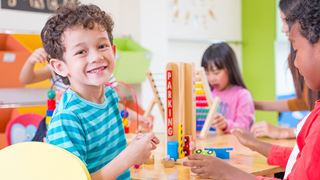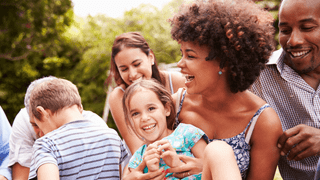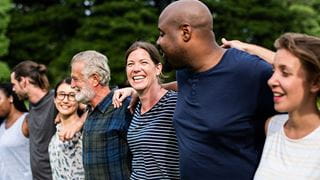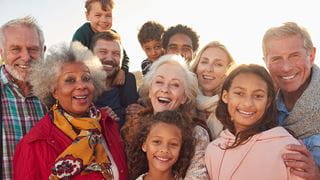What is Child Grooming?
In order to properly safeguard children, whether they’re your own or children you’re responsible for as part of your job, you need to understand the different forms of child abuse that children can fall victim to. One form of child abuse which can occur is child grooming, which can be perpetrated in a few different ways.
The increased amount of time that children are now spending on the internet has meant that there has been a rise in online grooming in particular over the last few years. In fact, figures from the NSPCC show there’s been an 80% increase in online grooming crimes recorded by the police over the past four years.
It’s clear that grooming, and online grooming in particular, is an issue that continues to affect children and young adults from all backgrounds. In this article, we explain what child grooming is, some of the different types of child grooming, and how to spot child grooming signs so you know the warning signs to look out for.
What is Child Grooming?
Child grooming is a form of abuse where a relationship is built between a child or young person and an abuser in order to exploit and manipulate them. There are no restrictions on how old or what gender an abuser can be – what matters is their actions.
The relationship can be based on different foundations, with emotional, authoritative or romantic components being used to provide additional sway over a child. It’s possible for abusers to already have different roles in a child’s life, whether that’s a mentor, teacher, authoritative figure or even someone appearing as a trusted friend.
An abuser who is grooming a child might wait until they are a certain age before escalating the abuse, or may wait until the child shows a certain level of trust before exploiting the relationship. Grooming relationships can lead to sexual abuse, further forms of exploitation and even child trafficking if the relationship isn’t prevented from developing.
What are the Different Grooming Models?
In the digital age, the terms child grooming and child sexual exploitation often conjure up images of adults preying on vulnerable young people via online chat rooms. While this is indeed a risk, children can also be put in danger by their teachers and even their family members, as there are different grooming models they can fall victim to.
Grooming relationships will look different depending on the tactics that an abuser uses to get close to a child, so it is important to understand the different models and what techniques are used in each.
The Relationship Model
The relationship model - also referred to as the 'boyfriend model' - refers to the type of grooming where young people are tricked into believing they have entered a loving relationship with another person, when in reality they are being coerced into having sex with them and/or their associates.
These perpetrators are not always necessarily older; there are cases where the relationship model of grooming is evident among peers, sometimes through gang activity. It is not always girls who are preyed upon either, making the term 'boyfriend model' somewhat misleading.
The Inappropriate Relationship Model
The inappropriate relationship model of child grooming involves an offender having an inappropriate amount of power or control over a young person, due to a large age gap, or a disparity in wealth or status. Similarly to the relationship model, the young person may believe that they are in a loving relationship, whereas they are actually being manipulated by the person they are with.
The Trafficking Model
The organised trafficking, or network trafficking model, can be wide-reaching, spanning entire cities or even countries. Young people can become victims in the 'buying and selling' of sexual services as perpetrators look to network with their fellow criminals.
Groomers will build a relationship with vulnerable young people and then persuade them into different kinds of activity, including drugs or sex work. They might control this behaviour where the young person lives or they might transport them to a new location to carry out these kinds of activities.
Even the young people involved in the organisation of the trafficking process can themselves be forced to recruit new targets into the network, especially if they’re being manipulated with serious threats. Since this model often involves numerous victims and offenders, it is usually widely reported in the media.
The 'Party Lifestyle' Model
The 'party lifestyle' model typically involves young people being groomed in a group and getting invited to parties in their local area. Children are often taught to believe that there is strength in numbers so therefore less danger, but this is an intentional ploy by the perpetrators to ensure the process is viewed as 'normal'.
Young people are then usually plied with 'treats' such as alcohol or drugs, with these later removed until repayment (often through sexual activity) can be agreed upon. Because children are targeted in a group, they may not want to be left out or might feel scared of the repercussions of saying 'no', which is something perpetrators often take advantage of.
Online Grooming vs. Offline Grooming
Child grooming isn’t limited to any one medium, with child grooming online becoming an increasingly common occurrence. This is because it gives abusers access to children through social media and messaging apps, circumventing parents and other adults who would otherwise protect the wellbeing of children.
Child grooming in person can occur if an abuser is able to acquire a privileged position in a child’s life, with some abusers building relationships with family members or friends to give them access to the child and minimise suspicion. Abusers may also take up positions in extracurricular or community groups that young people attend to build relationships through things like coaching.
Abusers can use additional tactics both online or in-person to influence a child, such as buying gifts, giving attention and taking them on trips. These tactics may also be used to convince a victim to keep quiet about the abuse or to guilt them later on into doing tasks for their abuser.
What Are the Signs of Child Grooming
Spotting the signs of child grooming can be incredibly difficult, as the indicators may be hidden or the behaviour dismissed as being actions that are typical of the child’s age. However, knowing what to look out for can help you spot warning signs earlier and either organise intervention or be ready to act quickly if the situation escalates.
There are a range of signs you might encounter, and while one of these signs in isolation might not mean a child is being abused, it’s important to take note of it and monitor it to see whether more signs of grooming a child crop up over time.
- Dramatic mood shifts or changes
- Inappropriate behaviour, specifically overtly sexual behaviour
- Behaviour that is inappropriate for a child’s age
- Increase in time spent away from home
- Periods of unexplained disappearance
- Having an older boyfriend or girlfriend
- Becoming friends with someone or a group of people who are a lot older
- Misuse of alcohol or drugs
- Secretive behaviour, especially around online behaviour
- Shifts in their use of devices or time spent online, both increases and decreases
- Unexplained money or gifts which they won’t discuss
Talking to a child about any concerning behaviour is the most direct way to address any worries, but it can be hard for them to open up about experiencing abuse. Many children or young people are unlikely to realise that they’ve been groomed, which can leave them confused about why parents or adults are concerned about them.
If you uncover a case of child sexual exploitation, the victim must never be blamed. It is likely that the perpetrator will have already made the victim feel it is their fault, so you must help the young person to realise that this is not the case.
If a young person does open up to you, it’s important to listen carefully and take what they’re saying seriously. Once you have an understanding of what has been going on, get in contact with a safeguarding officer or designated safeguarding lead to organise a more official enquiry or action to keep the child safe.
FAQs
What is considered child grooming?
Any relationship involving a child where trust and connection are exploited for the purpose of manipulation or abuse is considered child grooming. It doesn’t matter the age, gender or position of the abuser in the child’s life - if they are using their relationship for exploitation or abuse or plan to do so in the future, then they are grooming the child.
How does grooming affect a child?
The long-term effects of child grooming can have a significant impact, no matter how long the relationship lasted or what kind of exploitation it involved. The psychological effects of child grooming often include feelings of shame, guilt and low self-esteem, and may lead to the child developing mental health issues because of the experience.
If a child is young when they are groomed, they may also struggle with developing future relationships or building trust, as their negative experience may have impacted their ability to feel safe in connecting with other people. They may also have a warped view of relationships or themselves, which can lead to a range of issues later in life.
What is the sentence for grooming a child?
Child grooming offences carry a maximum penalty of 14 years imprisonment. The severity of the grooming and the exploitation will affect the level of penalty, and the abuser may also be placed on the Sex Offenders Register.
Summary
Today’s children are spending more and more time online, particularly on social media, which has given groomers a new platform for seeking out vulnerable individuals and building exploitative relationships. However, child grooming cases in person are still common and can go undetected for a long time, which is why it’s so important to understand the different models of grooming, the stages of grooming a child and the key signs of grooming in a child.
If you’re looking for more information about spotting the signs of abuse or grooming, our online safeguarding courses can help to improve your understanding of the various child grooming models and how to support young people who are at risk of being targeted.









/safer-recruitment.jpg?mw=320&hash=A2BB5E144C89C295EC10C63680F69F39C4C3E566)




/e-safety-.jpg?mw=320&hash=A9FCF6B70F32AD3EA74633373FF0213B000F75FF)










































